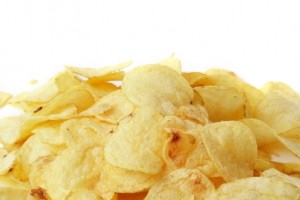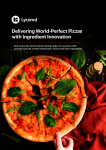Most new products fail: Implicit sensory testing can help beat the odds

When you launch a new food or beverage product, it is more likely to fail than succeed.
According to Harvard Business School professor Clayton Christensen, each year more than 30,000 new consumer products are launched - and 80% of them fail. Nielsen statistics are broadly in line with this, suggesting 85% of new CPG products fail. Meanwhile, research from Inez Blackburn of the University of Toronto discovered the failure rate for new products launched in the grocery sector is 70-80%.
The odds, it would seem, are stacked against any new product gaining traction. So what are food innovators getting wrong?
Speaking last week in Amsterdam at the Flavour Horizons Flavour Talk conference, Foster suggested that some inherent limitations of testing panels can go some way to explaining this phenomenon.
“There are three things we do know [about testing panels]. People don’t always tell the truth, people don’t think how they feel and people don’t always do what they say,” she explained.
An exploration of the neuroscience of flavour can help F&B innovators begin to overcome some of these issues.
Congruence is key
For a new product to gain acceptance, the various sensory responses it provokes need to align. Acceptance is a multisensory response and congruence is key to this process.
“We know there is a strong correlation between pleasantness in different areas of the brain,” Foster continued. “When you have things that are congruent, you get a rise in acceptance and pleasantness response.”
In contrast, when a product is incongruent you get “suppression” in different areas of the brain. This means that even when different individual aspects of a product are perceived positively, if they don’t work together the whole will be rejected.
This can be mitigated by paying attention to subthresholds – levels of a particular ingredient not powerful enough to produce a response. Through an awareness of “subthreshold effects” you can increase acceptability.
“This is useful because expensive ingredients can be enhanced by cheaper ingredients,” Foster noted.

She also believes that some interesting results can be achieved by playing on other senses. “The sensory interaction is very close together within the brain. There is a complex pathway [resulting in] cross over between different senses.”
For example, packaging can have a significant impact on how a product is perceived. Drinks in plastic bottles are perceived as fizzier, while drinks in glass bottles are perceived as sweeter. Foster's research for Heineken discovered that drinks whose packaging contained a star were also perceived as fizzier, something the beer giant and others have put into practice on grocery shelves.
Meanwhile, as the work of Oxford University’s Professor Charles Spence demonstrates, the perception of ‘crispiness’ is associated with high-frequency sound.
Different decision pathways
While congruence can be used in this way to enhance various product attributes, Foster believes that traditional sensory panels are not picking up all the signs needed to predict acceptance.
This can be attributed to the difference between the two decision routes we follow – implicit and explicit decision making.
Explicit decision making is rational – an area well documented in sensory testing panels. On the other hand, it is harder to pick up on the emotional, involuntary and associative responses that inform implicit decisions.
Implicit decisions are also hard to predict. If two people are given ‘fish’ as a stimulus, one may associate it with the sea while the other will link it to chips.
Foster and Brown Research, which has worked alongside CPG brands including Unilever, has devised a method of measuring implicit responses to stimuli through a quick-fire response programme.
In this model, a subject is shown an image and asked to link it to brand ‘a’ or ‘b’ as quickly as possible. In the second round , the main trial, they will then be shown a word followed by an image, told to ignore the word and respond to the image. If that word is associated with the image, the response time will be significantly quicker.
By measuring the response time between the word and the sample, Foster said she can gauge implicit reactions. “Implicit reactions are difficult to fake. We are able to detect unobservable attitudes,” she said.
In this way, Foster is able to eliminate errors caused by preconceptions of social acceptability in the subject and measure factors like acceptability, social inclusion, functionality and image. Foster added that her results have a “high level” of predictability.
Foster said this approach could augment current product acceptance testing – and represents a significantly cheaper alternative to FMRI scanning.

























